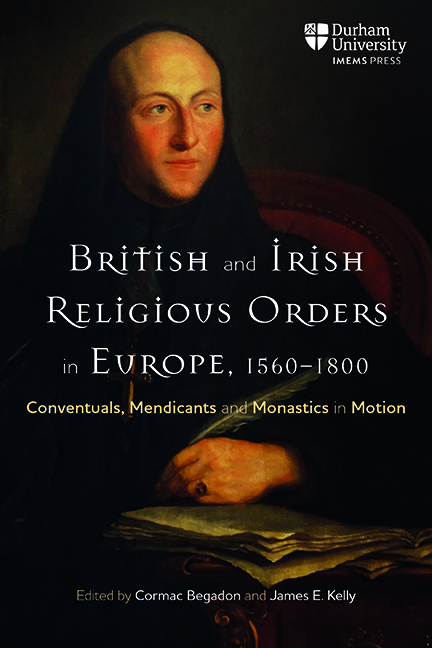 British and Irish Religious Orders in Europe, 1560-1800
British and Irish Religious Orders in Europe, 1560-1800 Published online by Cambridge University Press: 07 October 2022
Gardens of various shapes and sizes surrounded the English Catholic communities which found themselves in exile from the end of the sixteenth century until Emancipation was granted in 1829. They were either purely decorative, providing a setting for a convent or college, or practical, providing a major source of the community's food. Like many a garden, they were taken for granted, so no comprehensive survey of any of them survives. They can, however, be visualised by means of contemporary literary comments or through graphic illustration where they sometimes enhanced the grandeur of a range of conventual buildings. Meanwhile, gardens cultivated in England by Catholics sometimes reflected continental trends which their owners had noted during their European residences or tours. This continental involvement provides a balance to recent discussions of English Catholic interest in gardens which argue in terms of a conscious attempt by some seventeenth-century Catholic recusants to materialise a medieval horticultural past and so give them, as survivalists, a continuity with their ancestors in the faith. There is, furthermore, some agreement among historians that well-to-do English Catholics in the eighteenth century, barred because of their faith from entering the Anglican establishment, turned to what they could legally concentrate on, that is, their gardens and estates, and in doing so became major innovators in garden and estate management. Earlier, this movement had been paralleled in some exiled English Protestant gentry, like John Evelyn, who, coming back to England during the Civil War period, found themselves also barred from public office and turned instead to cultivating their gardens. Particular importance is, therefore, given in this chapter to the influence of continental horticulture on English Catholic gardeners whose religious faith had smoothed their entry into European gardening circles. English Catholic gardens were a blend of indigenous horticultural developments with new gardening initiatives imported from Catholic Europe, where there was quite clearly a continuity with the religious past. Unfortunately, there is insufficient space to examine in this chapter various horticultural ramifications such as how English Catholic gardening influenced devotional engravings, how religious emblems, a particular interest of the Jesuits, found a place in gardens, and how floral imagery derived from Catholic gardens found its way onto contemporary religious textiles.
To save this book to your Kindle, first ensure [email protected] is added to your Approved Personal Document E-mail List under your Personal Document Settings on the Manage Your Content and Devices page of your Amazon account. Then enter the ‘name’ part of your Kindle email address below. Find out more about saving to your Kindle.
Note you can select to save to either the @free.kindle.com or @kindle.com variations. ‘@free.kindle.com’ emails are free but can only be saved to your device when it is connected to wi-fi. ‘@kindle.com’ emails can be delivered even when you are not connected to wi-fi, but note that service fees apply.
Find out more about the Kindle Personal Document Service.
To save content items to your account, please confirm that you agree to abide by our usage policies. If this is the first time you use this feature, you will be asked to authorise Cambridge Core to connect with your account. Find out more about saving content to Dropbox.
To save content items to your account, please confirm that you agree to abide by our usage policies. If this is the first time you use this feature, you will be asked to authorise Cambridge Core to connect with your account. Find out more about saving content to Google Drive.